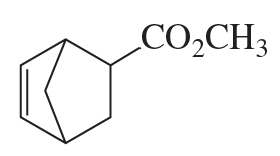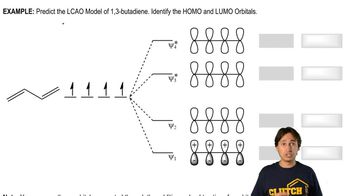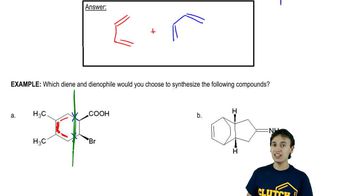Here are the essential concepts you must grasp in order to answer the question correctly.
Diels–Alder Reaction
The Diels–Alder reaction is a [4+2] cycloaddition reaction between a conjugated diene and a dienophile, resulting in the formation of a six-membered ring. This reaction is a powerful tool in organic synthesis due to its ability to create complex cyclic structures with high stereoselectivity and regioselectivity. Understanding the reactivity of both the diene and the dienophile is crucial for predicting the outcome of the reaction.
Recommended video:
Diels-Alder Retrosynthesis
Diene and Dienophile
In the context of the Diels–Alder reaction, a diene is a molecule that contains two double bonds, which can participate in the reaction, while a dienophile is a compound that contains a double or triple bond and reacts with the diene. The choice of diene and dienophile significantly influences the reaction's efficiency and the stereochemistry of the product. Recognizing suitable pairs is essential for successful synthesis.
Recommended video:
Drawing MO Diagram for Dienes
Retrosynthetic Analysis
Retrosynthetic analysis is a method used in organic chemistry to deconstruct a target molecule into simpler precursor structures. This approach helps chemists identify potential synthetic routes, including the use of reactions like the Diels–Alder. By analyzing the target compound's structure, one can determine the necessary diene and dienophile, facilitating the planning of the synthesis.
Recommended video:

 Verified step by step guidance
Verified step by step guidance Verified video answer for a similar problem:
Verified video answer for a similar problem:



 4:02m
4:02m